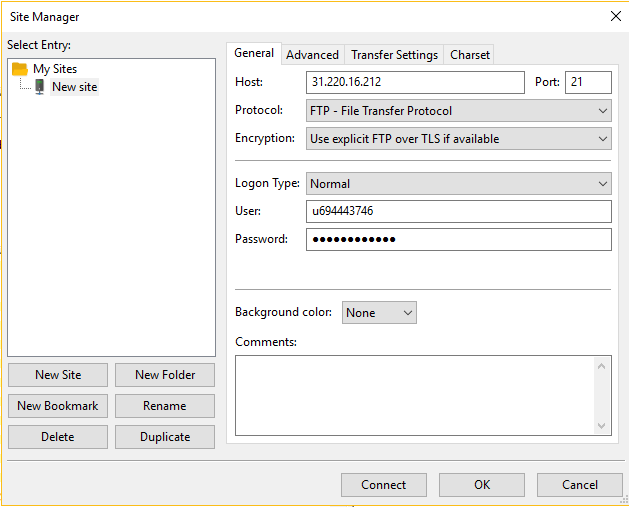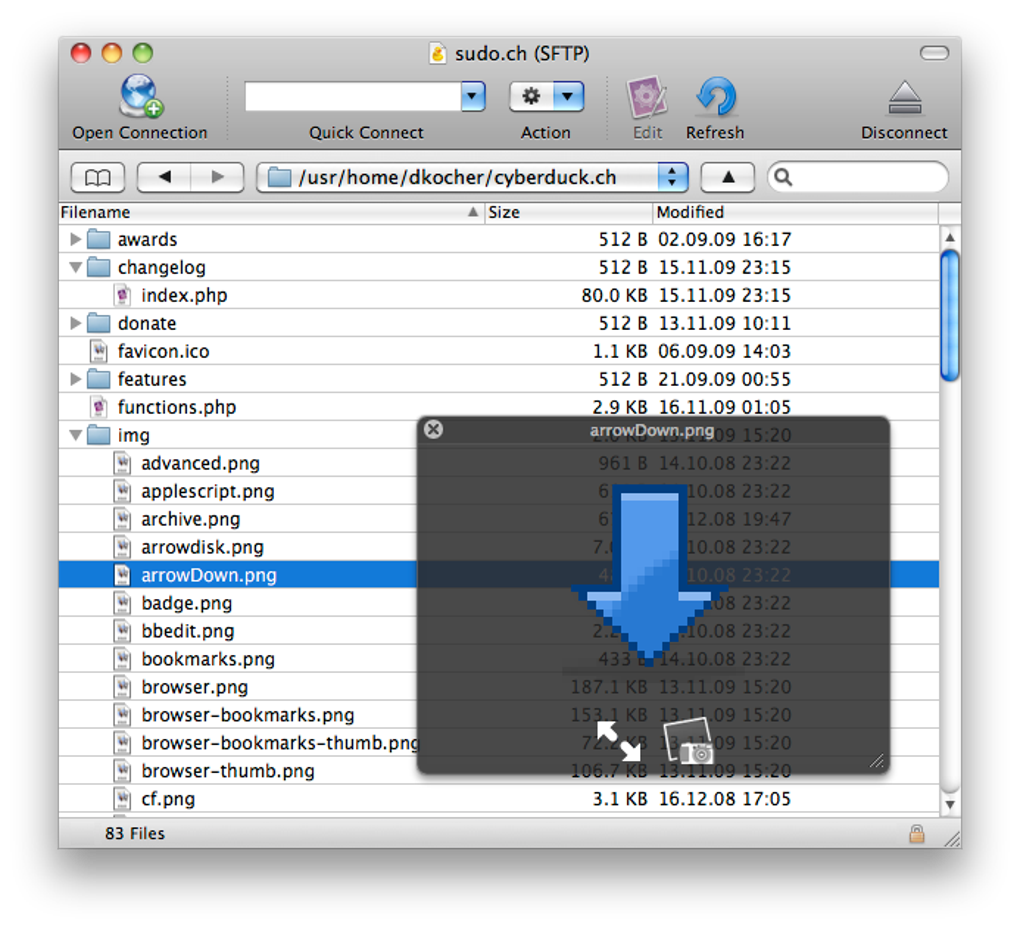Filezilla For Mac 10.9
- Filezilla For Mac 10.9 Download
- Filezilla For Mac 10.9.5
- Filezilla For Mac 10.9 Free
- How To Use Filezilla For Mac
- Filezilla For Mac Os 10.9
What is FileZilla?
This documentation attempts to explain installation of the FileZilla FTP and SFTP Client. FileZilla comes in three versions. There is an installer version that offers ease of installation and uninstallation for novice users, a zipped version for people that don't like installers or have special needs, and then for the advanced user there is a source version which lets you take a look at. Mac OS X Mavericks 10.9.5 is a powerful operating system with a variety of enhancements and a variety of new features that delivers more stability and ultimate level of performance. Oct 03, 2017 Using FileZilla with Mac. Keep in mind that you must be using OS X 10.9 or later for FileZilla to work on your Mac.
Oct 03, 2017 Using FileZilla with Mac. Keep in mind that you must be using OS X 10.9 or later for FileZilla to work on your Mac. Using an earlier version will result in FileZilla malfunctioning. How to Set Up FileZilla on Mac. The first step to setting up your very own FileZilla client is to download it. Go to FileZilla-project.org and download the. Minimum Mac OS X 10.9 or later. Download FileZilla for Linux. Download.TAR.BZ2 File. Debian 9.0 recommended. FileZilla is a registered trademark owned by Tim Kosse. FileZilla.software is an unofficial website and in no way associated with the developer(s). Any contents, resources found on our website purpots our own personal view. Download FileZilla Client 3.50.0 for Mac OS X. The latest stable version of FileZilla Client is 3.50.0. Please select the file appropriate for your platform below.
FileZilla is an FTP/SFTP client. FTP stands for File Transfer Protocol, while SFTP is the more secure version of FTP. FileZilla is capable of using both FTP and SFTP, so you can have that extra security if you desire it.
FTP/SFTP is used to transfer files from one machine to another. It is a common way to take your local files and copy them to your server. FTP/SFTP clients, like FileZilla, make the process easy by giving you an easy-to-use interface. No complex commands needed here. Most of the time, you can drag-and-drop files and folders in order to start a transfer.
The best part about FileZilla? It’s free and open-source, making it easy on the bank. It’s also usable on different platforms. Even though this article is focused on FileZilla for Mac, you can put FileZilla on many other popular operating systems.
Using FileZilla with Mac
Keep in mind that you must be using OS X 10.9 or later for FileZilla to work on your Mac. Using an earlier version will result in FileZilla malfunctioning.
How to Set Up FileZilla on Mac

The first step to setting up your very own FileZilla client is to download it. Go to FileZilla-project.org and download the FileZilla Client. Be sure that you don’t download the FileZilla server. The server is only compatible with Windows.
The file will download as a .zip file and, when you click the downloaded file, your Mac should automatically extract it for you. All that’s left for you to do is open the extracted file and follow the installation instructions.
Connecting Mac to Server

Once you have installed the client, open it. Before you can do any transferring, you need to connect the client to your server. To do that, you’ll need to know some of your server information:
An Attest Engagement under Attestation Standards (AT) Section 101 is the basis of SOC 2 and SOC 3 reports. At the conclusion of a SOC 1 or SOC 2 audit, the service auditor renders an opinion in a SOC 1 Type 2 or SOC 2 Type 2 report, which describes the CSP's system and assesses the fairness of the CSP's description of its controls. For use of the trust services criteria in a SOC for Supply Chain examination. It is important to note that these changes do not alter in any way the trust services criteria used to evaluate controls in a SOC 2 ®, SOC 3 ®, or SOC for Cybersecurity examination. All BL sections can be found in AICPA Professional Standards. SOC 2 audits review the controls in place at a service organization relevant to the following five trust service principles, or criteria, as outlined by the AICPA: Security: Information and systems are protected against unauthorized access, unauthorized disclosure of information, and damage that could compromise the availability, integrity. Service organisation controls (SOC) 2 is an internal controls offering that utilises the American Institute of Certified Public Accountants (AICPA) standards to provide an audit opinion on the security, availability, processing integrity, confidentiality and/or privacy of a service organisation’s controls. Soc 2 controls list excel.
Filezilla For Mac 10.9 Download
- Hostname: This is your server’s hostname. For pair Networks customers, the hostname follows the template, username.pairserver.com.
- Username: This is your server’s username. For pair Networks customers, this is the username you use to log in to the ACC.
- Password: This is the server’s password. For pair Networks customers, this is the password you use to log in to the ACC.
- Port Number: This is the port number used to establish a connection to the server. For pair Networks customers, the port number is 22.
At the top of the client interface, input this information. Once you have done this, click Quickconnect.
If this is the first time you are connecting to your server, a warning may pop-up and tell you that the “server host key is unknown.” If you are sure you have connected to the right account, click OK.
Using FileZilla to Transfer Files
Once you have connected, your local directories will appear under Local Site. Your server directories will appear under Remote Site.
You can click the little triangles next to the directory names to see any subdirectories. You can also click the name of a directory to display any files within. These files will be displayed in the space below the Local Site or Remote Site, depending on where the selected directory is located.
At this point, you know enough to start using FileZilla for transferring files. There are several ways to start a file transfer. The first method is to double-click the name of a single file. This will automatically start a transfer to the opposite location.

Another method is to select multiple files by using Cmd + Shift + Click and then dragging-and-dropping the files to the desired directory on the opposite side. You can also drag-and-drop directories to copy them.
Bottom Tabs

Once you have started a transfer, you can see if it was successful by looking at the tabs at the bottom of the screen.
- Queued Files: If you are transferring a directory or a large group of files, they will be queued in this tab. You can watch progress from here. When empty, no transfers are in progress.
- Failed Transfer: If not successful, click this tab and it will tell you some information about the transfer, including the reason it failed.
- Successful Transfers: This will contain a list of files that have been transferred successfully, where they were from, and where they were transferred to.
Using the Interface
Filezilla For Mac 10.9.5
Along the top of the client interface, there is a row of icons. See below for a description of each icon’s purpose.
It supports almost all of the top android games by providing full- fledged control options. 
Filezilla For Mac 10.9 Free
| Add new and manage connections to different servers. Also add new directories here. |
|---|
| Toggles hide/show the status output shown when trying to make a connection. |
| Toggles hide/show the local site folder explorer. |
| Toggles hide/show bottom tabs (Queued Files, Failed Transfers, Successful Transfer) |
| Toggles hide/show bottom tabs (Queued Files, Failed Transfers, Successful Transfer). |
| Refreshes directory listing. This will update it with the newest changes. |
| Toggle start/stop for transferring processes. |
| Stops all current transfers. |
| Disconnects from remote servers. |
| Reconnects to the previously connected remote server. |
| Brings up a screen where you can set up and manage filters for both remote and local sites. |
| Toggles on/off directory comparison. Use this to compare files on the two sites (remote and local). Highlight Meaning:
|
| Toggles on/off synchronized browsing feature. Navigating through the local directory will change the remote directory structure accordingly. |
| Brings up a page that allows you to search for files recursively. |
How To Use Filezilla For Mac
FileZilla in Review
Filezilla For Mac Os 10.9
If you don’t want to use code or commands in the terminal, FileZilla is a great option for you. Securely moving files and an easy-to-use graphical interface are just a few of the features that FileZilla offers. Whether you want to implement filters or control both local and remote sides with synchronized browsing, FileZilla gives you the features you need to organize and confidently move files. For those who aren’t completely at ease with using Terminal commands to transport files, FileZilla is a great alternative.